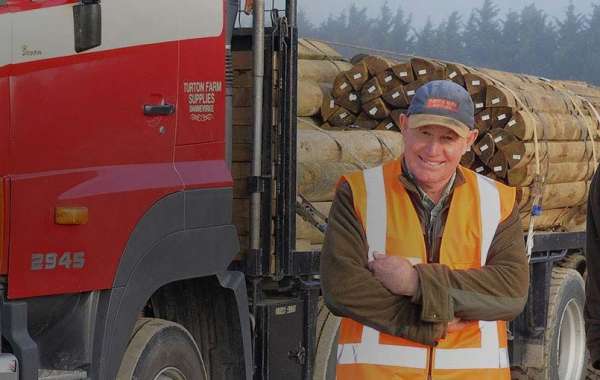Building a custom cabin on your New Zealand property can be an exciting and practical solution for extra accommodation, storage, or even a peaceful retreat. Whether you need a space for farm workers, additional storage for equipment, or a guest cabin, custom cabins offer flexibility and cost-efficiency. However, the process of building a custom cabin requires careful planning and consideration to ensure it meets your needs and stands the test of time. In this article, I’ll guide you through the steps to successfully build a custom cabin on your property.
1. Define Your Purpose and Needs
The first step in building a custom cabin is to clearly define its purpose. What do you need the cabin for? Are you looking for a space to house farm workers, a storage unit for tools, or a retreat for guests? The purpose of the cabin will determine the size, layout, and features that should be included in the design.
If the cabin is meant for accommodation, consider how many people will use it and whether you need multiple rooms, a kitchen, or a bathroom. If it’s for storage, think about the size of the items you plan to store and how you can optimise the space for functionality. Defining your purpose at the outset will help you make informed decisions throughout the design and building process.
2. Choose the Right Location
Selecting the right location for your custom cabin is crucial to its success. Consider the layout of your property and the intended use of the cabin. For accommodation, you’ll want to ensure that the cabin is located in a convenient spot near your farm operations, yet still offers privacy and a peaceful environment.
If the cabin is for storage, it should be placed near the equipment or supplies you intend to store, allowing for easy access. Additionally, make sure that the site is suitable for building—check for factors such as land slope, soil conditions, and drainage. A flat, stable area with good access will make the building process easier and prevent future issues with the cabin’s foundation.
3. Design Your Cabin to Fit Your Needs
Once you’ve decided on the purpose and location, it’s time to design your custom cabin. This is where you can get creative and tailor the space to suit your specific requirements. Custom cabins are incredibly flexible, and you can choose everything from the floor plan to the materials used.
For example, if you need accommodation, your design may include several rooms, a kitchenette, and a bathroom. If it's a storage cabin, you can design an open-plan structure with plenty of shelving, racking, and reinforced flooring to handle heavy equipment. The design process should be collaborative with your builder to ensure that all your needs are met.
Consider factors like insulation, windows, and doors for your design. Insulation is particularly important in New Zealand’s varying climate, ensuring the cabin stays warm in winter and cool in summer. High-quality windows can enhance natural light and improve energy efficiency, while durable doors and locks ensure safety and security.
4. Select the Right Materials for Durability and Aesthetics
When building a custom cabin, choosing the right materials is essential for ensuring durability, weather resistance, and aesthetic appeal. The materials you choose should be suitable for your farm’s environment and designed to withstand the harsh New Zealand conditions.
For example, timber is a popular material for custom cabins because it’s readily available, sustainable, and offers natural aesthetic appeal. However, you can also consider steel framing, which provides extra durability and strength. The roof should be constructed with weather-resistant materials like metal or treated timber to withstand strong winds and heavy rainfall.
Additionally, you may want to incorporate eco-friendly materials, such as recycled wood or sustainable insulation, to make the cabin more energy-efficient and environmentally friendly.
5. Work with a Professional Builder
Building a custom cabin is a significant investment, and it’s important to work with an experienced builder who understands your vision and can bring it to life. A professional builder will not only help you with the design and construction but also ensure that your cabin complies with New Zealand’s building codes and regulations.
When choosing a builder, look for someone with experience in building custom cabins, as they will be able to provide expert advice on materials, design, and building methods that best suit your property. Ensure they are licensed and insured, and ask for references from previous clients to verify their work quality.
6. Consider Sustainable Features
Sustainability is an important consideration when building a custom cabin. Incorporating eco-friendly features can reduce your environmental impact, save you money on energy costs, and make your cabin more comfortable to live in.
Some sustainable features to consider include solar panels for energy generation, rainwater harvesting systems, and energy-efficient windows and insulation. Additionally, using local, sustainable materials like native timber or recycled products can further reduce your cabin’s environmental footprint.
By building a sustainable cabin, you’re not only reducing your farm’s overall impact on the environment but also contributing to a greener future.
7. Plan for Future Expansion
While designing your custom cabin, it’s important to think about potential future needs. Consider whether you may want to expand the cabin in the future, whether by adding more rooms, creating additional storage space, or making it larger for guest accommodation.
Planning for future expansion during the design phase will make it easier to add new features down the line without major renovations or disruptions. It’s a good idea to leave space for potential growth, whether it’s in the form of extra land or adaptable room layouts.
Conclusion
Building a custom cabin on your New Zealand property is a fantastic way to create a versatile, cost-effective space that meets your specific needs. By carefully considering its purpose, location, design, and materials, you can ensure that your cabin is functional, durable, and aesthetically pleasing. Working with an experienced builder and incorporating sustainable features will enhance your cabin’s long-term value and efficiency.
For expert guidance and a variety of custom cabin options, visit Turton Farm Supplies to start designing your ideal farm accommodation.








